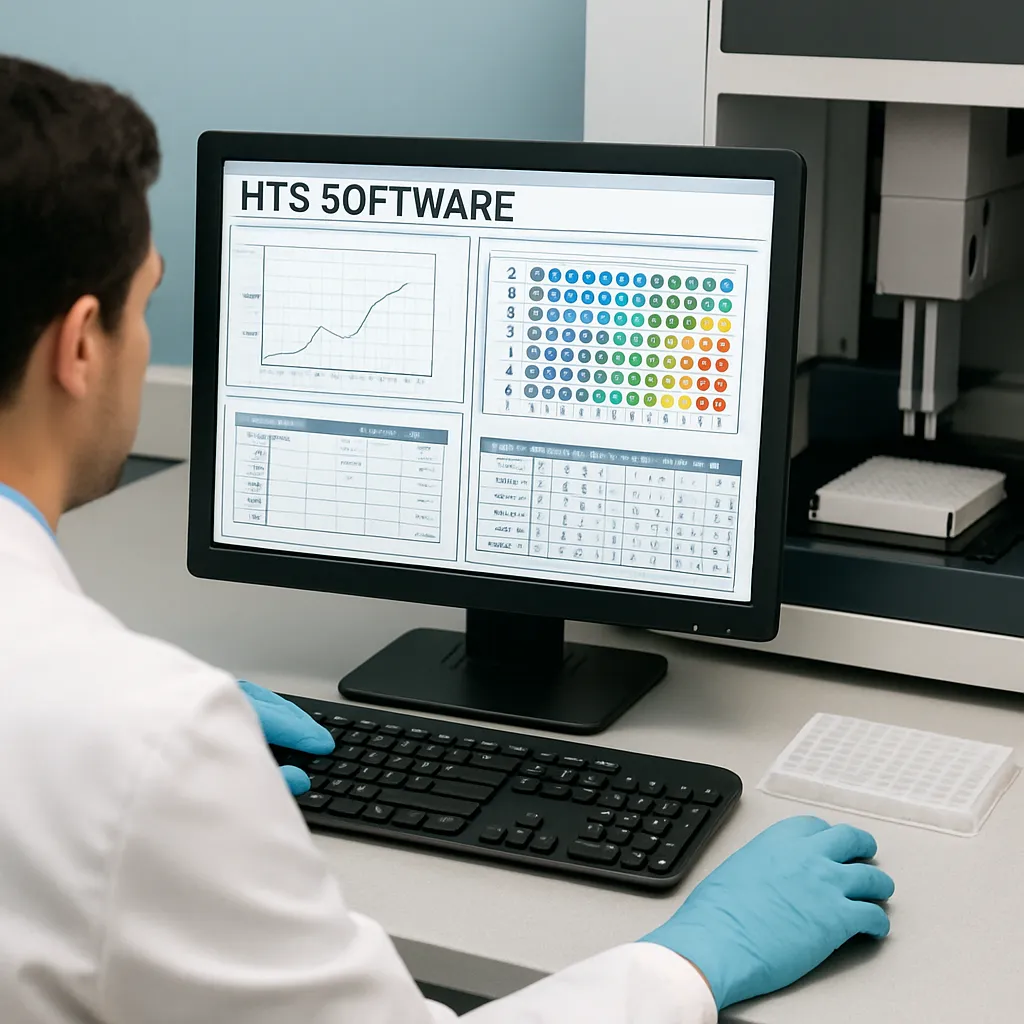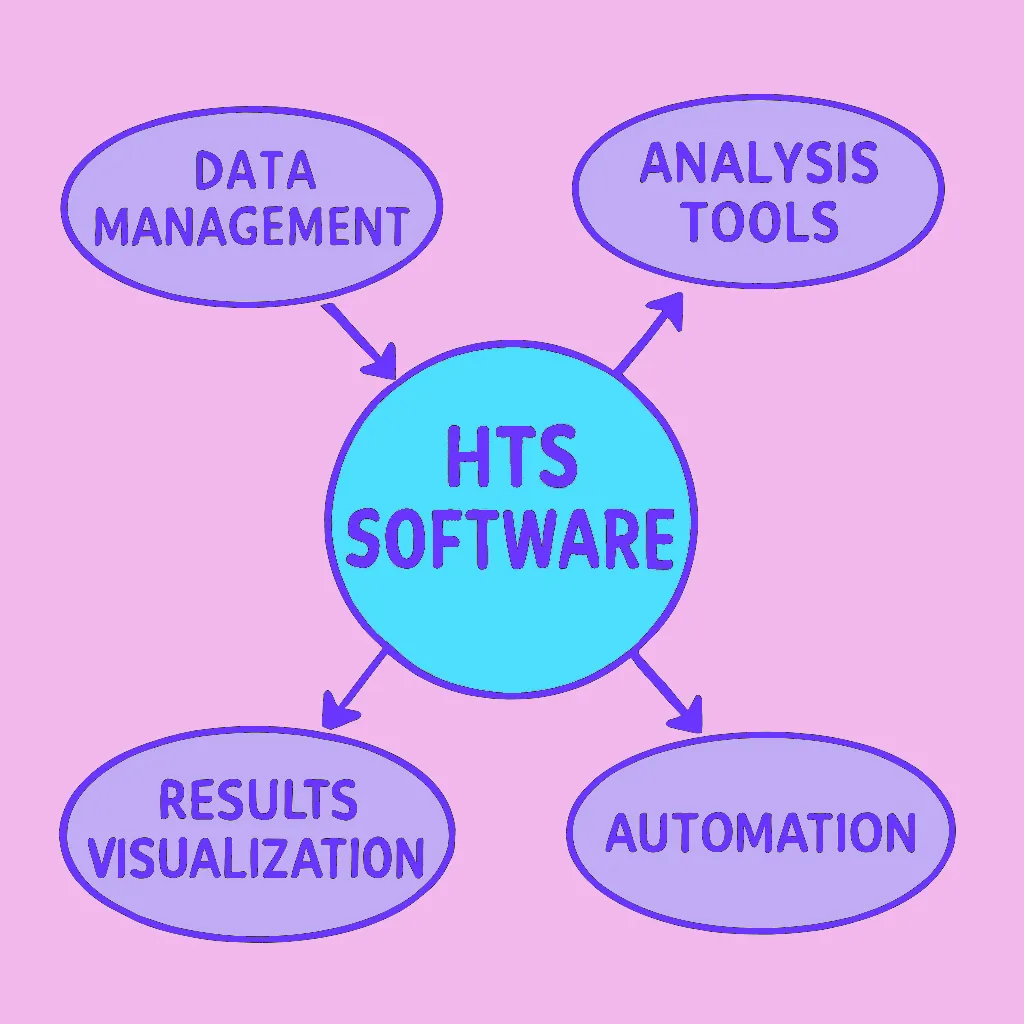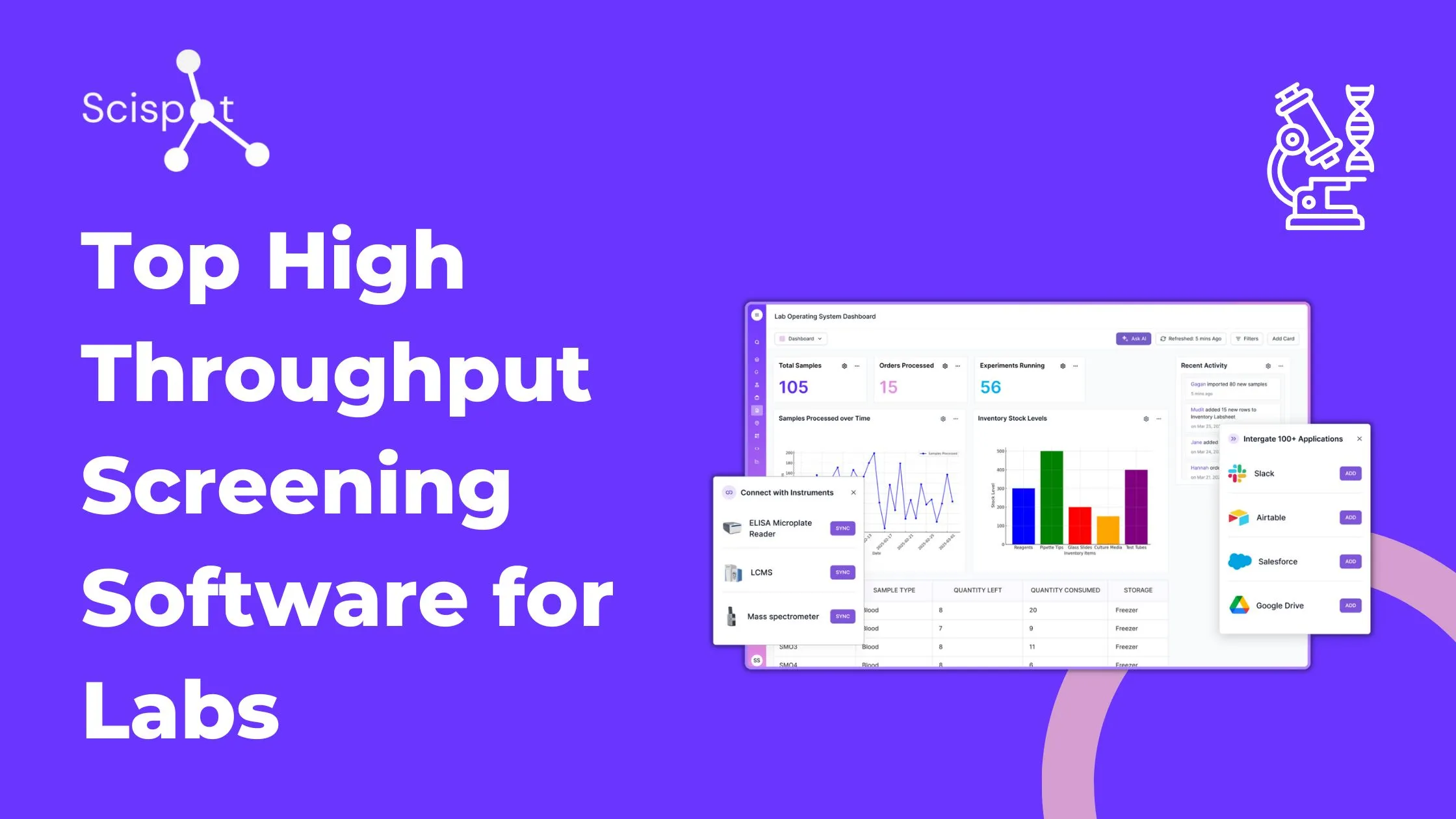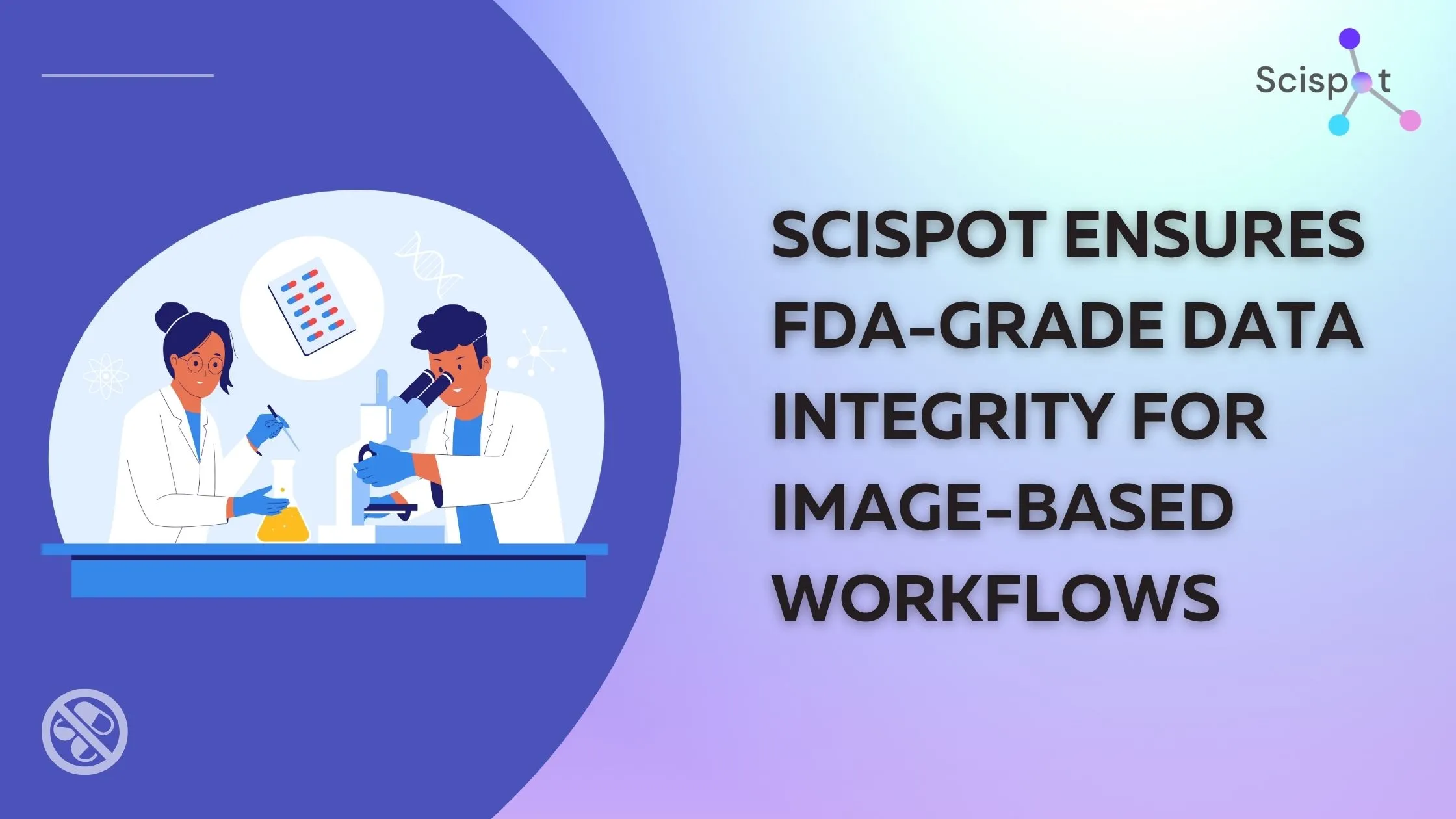High throughput screening software is revolutionizing the way laboratories conduct research. It automates complex processes, making them faster and more efficient.
This software is crucial for drug discovery, helping identify potential compounds quickly. It integrates with laboratory equipment, streamlining workflows and reducing errors.
Researchers rely on it for data analysis, turning vast datasets into actionable insights. The software's flexibility allows customization to fit specific research needs.
With advancements in technology, virtual high throughput screening is becoming more prevalent. This reduces the need for physical experiments, saving time and resources.
As the demand for efficient research grows, high throughput screening software remains a vital tool in modern laboratories.
What is High Throughput Screening (HTS) Software?
High throughput screening (HTS) software is pivotal in automating the screening process in laboratories. It manages large-scale experiments that test numerous compounds efficiently.

HTS software helps in identifying active compounds and genes that influence biomolecular pathways. This is essential for drug discovery and development.
A key function of HTS software is data integration. It collects, analyzes, and visualizes extensive datasets for researchers. This streamlines the decision-making process, allowing for quicker insights.
Key features of HTS software include:
- Automated data collection and analysis
- Integration with laboratory instruments
- Customizable workflows
- Detailed reports and visualizations
By reducing manual input, HTS software minimizes human error. This ensures reliable and reproducible results, making it indispensable in modern research environments. The rise of AI within HTS software further enhances predictive capabilities.
Modern HTS teams increasingly prefer platforms that combine assay setup, plate design, instrument integration, and downstream data analysis in one place. Scispot does exactly that.
HTS labs use Scispot to design digital plate maps, send input files directly to liquid handlers and plate readers, capture output data automatically, and generate analysis-ready datasets without manual cleanup. Its AI-driven QC and automated workflow engine cut hours of manual steps, making it a natural fit for screening teams handling thousands of samples a day.
Key Features of High Throughput Screening Software
High throughput screening (HTS) software boasts several features crucial for accelerating research. These features streamline various processes, improving efficiency in drug discovery and other fields.

One important feature is automated screening, which allows for fast and high-volume testing. This automation reduces the time needed to identify potential drug candidates significantly.
HTS software also provides seamless integration with existing laboratory equipment. This compatibility ensures that researchers can easily incorporate it into their current workflows. The integration aids in resource optimization by reducing the need for extensive modifications or additional purchases.
A good HTS system features:
- User-friendly interfaces
- Scalable solutions
- Robust data analytics
- Cloud-based platform options
Moreover, data security is a key aspect of HTS software. It ensures that sensitive research data is protected and compliant with industry standards. Overall, these features make HTS software indispensable in modern laboratory settings, facilitating faster and more accurate scientific breakthroughs.
Many HTS platforms offer automation or data management, but only a few bring everything together into one cohesive system. Scispot provides a full HTS operating layer—digital plate maps, automated assay setup, data normalization pipelines, and instrument-ready export files.
Labs can drag-and-drop controls, replicate wells, run viability or IC50 templates, and push plate layouts directly into their robotics. Scispot’s Manifest API captures output files from plate readers and liquid handlers, runs AI-assisted QC checks, and generates dashboards instantly.
This end-to-end approach removes the silos between wet lab execution and data analysis, making high throughput teams drastically faster.
Benefits of Using HTS Solutions in the Laboratory

HTS solutions offer numerous benefits to laboratories, significantly boosting productivity and efficiency. One major advantage is the automation of repetitive tasks, which reduces human error and frees up time for researchers to focus on critical analysis.
Through HTS, laboratories can rapidly identify compounds that modulate specific biological pathways, accelerating drug discovery. This speed is crucial in competitive fields like pharmaceuticals, where time-to-market is key.
Other benefits include:
- Enhanced accuracy in data analysis
- Reduced overall costs
- Integration with existing systems
These solutions also support high-volume testing, enabling labs to handle large datasets with ease. Consequently, HTS solutions not only streamline workflows but also improve research outcomes, making them essential tools in modern scientific investigation.
Types of High Throughput Screening Software and Equipment
High throughput screening software comes in various forms, each tailored to specific laboratory needs. Some software focuses on high-content screening, while others are designed for compound libraries or biochemical assays. The choice depends on the specific requirements of the research being conducted.
Screening equipment complements the software, enabling the automation of sample testing and data collection. Such equipment is integral to achieving the high-speed processing that characterizes HTS.
Common types include:
- Assay development software
- Liquid handling robots
- Plate readers
- Software for managing compound libraries
These tools and technologies collectively enable laboratories to conduct efficient and accurate high throughput screening, streamlining the process from setup to analysis. As HTS technology evolves, so do the capabilities and features of the software and equipment that support it.

Data Analysis Tools and Assay Management Software
Data analysis tools are a critical part of high throughput screening. They process and interpret vast datasets, transforming raw data into valuable insights. Efficient data analysis tools contribute to faster and more accurate research outcomes.
Assay management software assists researchers in designing and executing experiments. This software ensures the systematic handling of assays, which is crucial for reliable results. By automating workflows, it minimizes human error and increases productivity.
Popular features include:
- Automated data processing
- Intuitive user interface
- Robust data integration
- Customizable workflow settings
Both data analysis tools and assay management software are indispensable in modern laboratories. They enhance efficiency, accuracy, and data integrity, making them vital components of any successful screening project.
Virtual High Throughput Screening and Automated Screening Technology
Virtual high throughput screening (vHTS) revolutionizes drug discovery by reducing the need for physical tests. It uses computer simulations to screen large compound libraries. This approach saves both time and resources in the drug discovery process.
Automated screening technology elevates the speed and precision of laboratory tests. It utilizes robotics and software to automate repetitive tasks. The result is higher throughput and consistency in screening assays.
Key advantages of these technologies include:
- Cost savings
- Enhanced efficiency
- Reduced human error
- Faster research cycles
Together, vHTS and automated screening are leading the charge toward more efficient research methodologies. They complement traditional screening methods, bringing innovation to modern laboratories. These technologies are essential for anyone aiming to stay ahead in the competitive field of drug discovery.

How to Choose the Best High Throughput Screening Software
Selecting the right high throughput screening software involves careful consideration of specific needs. Compatibility with existing laboratory equipment is crucial. Ensure the software can integrate seamlessly with your systems.
Evaluate the user interface and ease of use. The software should cater to users of varying technical expertise. User-friendly design reduces training time and increases productivity.
Important factors include:
- Customization options
- Scalability for different project sizes
- Reliable customer support
- Regular updates with new features
By focusing on these aspects, you can find software that enhances your research efficiency and aligns with your laboratory’s goals. Comprehensive evaluation and testing are essential steps in the selection process.
Future Trends in Screening Software and Drug Discovery
High throughput screening software is rapidly evolving with technological advances. Future trends focus on integration with artificial intelligence and machine learning. These technologies enhance predictive capabilities, driving more accurate drug discovery outcomes.
Emerging trends in screening software include:
- Cloud-based platforms for enhanced data sharing
- Increased use of big data analytics
- Greater emphasis on personalized medicine
These innovations streamline the drug development pipeline. They enable researchers to make informed decisions quickly. As these trends mature, they will continue transforming the landscape of screening and drug discovery, making processes more efficient and precise.
As HTS labs scale, they need more than just software—they need an integrated platform that supports robotics, manages assay templates, harmonizes output data, and delivers instant insights. Scispot is purpose-built for this next generation of screening workflows.
HTS teams choose Scispot because it automates everything from plate setup to QC to reporting. With built-in connectors for instruments and AI-assisted analysis, it becomes a no-brainer for any lab looking to accelerate screening cycles and get cleaner data with less effort.

Conclusion
High throughput screening software has become the backbone of modern discovery work. It lets teams run more assays, process more samples, and make faster decisions without adding more manual effort. By automating complex tasks, it reduces cost, cuts down errors, and shortens the path from experiment to insight.
As technology evolves, HTS systems are becoming smarter, more connected, and more data-driven. Labs can now combine robotics, cloud computing, and AI to handle plate setup, data capture, QC, and analysis in a unified way. This shift is helping researchers move from slow, manual workflows to scalable, automated processes that support true high-throughput work.
The future of screening belongs to platforms that integrate seamlessly with instruments, automate analysis, and give scientists clean, reliable data instantly. Labs that adopt these systems will stay ahead—running more screens, generating deeper insights, and accelerating the entire discovery cycle.z





.webp)





